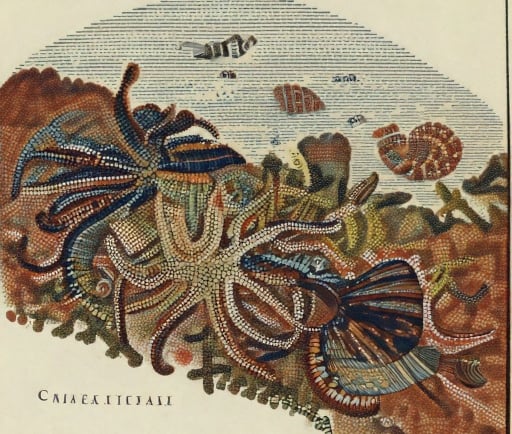The Roman Mosaic of Sea Creatures in the House of Faun


Introduction to the Roman Mosaic
The House of Faun, located in Pompeii, is home to one of the most exquisite examples of Roman art—the mosaic of sea creatures. This remarkable piece is a testament to the artistic sophistication of ancient Rome and its profound appreciation for marine life. With a striking black and blue background, the mosaic features twenty-one vibrant forms of fish, shellfish, eels, and polyps, skillfully crafted to create a dynamic underwater scene.
Composition and Artistic Techniques
The intricate design of the mosaic demonstrates the advanced techniques employed by Roman artisans. Each marine creature is composed of colorful tesserae, small pieces of glass or stone that when assembled, create an extraordinary visual experience. The contrast provided by the black and blue background enhances the vividness of the sea creatures, allowing their bright colors to stand out prominently. Such choices in color and texture not only reflect the aesthetic values of the time but also showcase the technical mastery of the mosaicists.
The Significance of the Mosaic
This iconic mosaic is not just a decorative piece; it serves a deeper purpose reflecting the cultural and social values of the Roman elite. Sea creatures, often associated with beauty and luxury, symbolize abundance and harmony with nature. The presence of such motifs in the House of Faun suggests the wealth and refined tastes of its inhabitants. Furthermore, mosaics like this one were essential for enhancing the visual appeal of Roman homes, providing an idyllic space for social gatherings and showcasing status among peers.
In summary, the mosaic of sea creatures in the House of Faun stands as an enduring symbol of Roman artistry and cultural sophistication. Its vivid portrayal of marine life invites us to appreciate the grandeur of ancient Roman art while reflecting the deep connection that the Romans had with their surrounding environment. As we admire this remarkable piece, we not only witness a brilliant display of craftsmanship but also glimpse into the historical significance that art held in Roman society.
